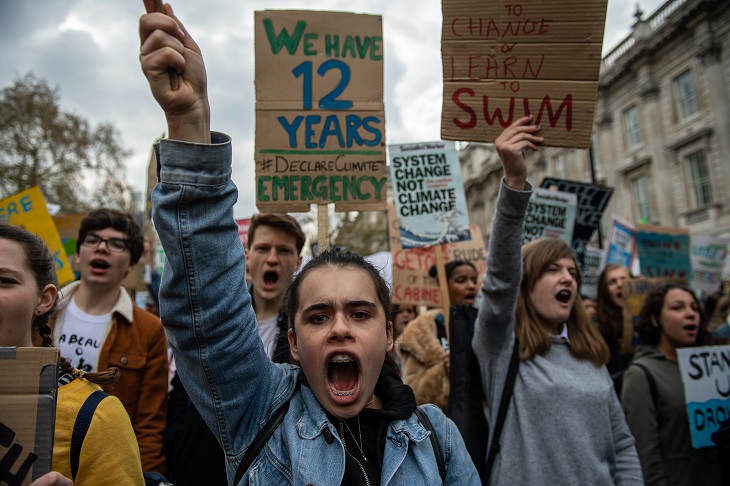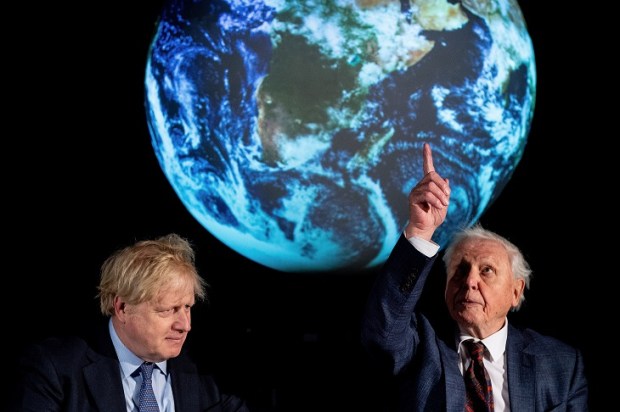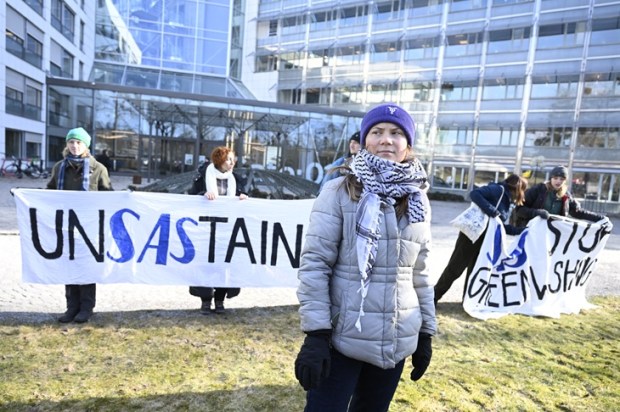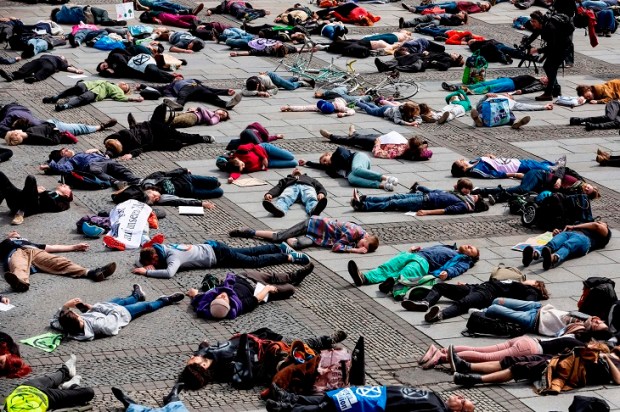I’ve never understood the fascination dogs have with the wheels of cars which is demonstrated as they come running out to bark as you drive by, but there are few funnier things in life than watching what happens when the dog catches the car.
One time I was in a street looking for an address, and as I slowed, a dog came running out at me. About 100 metres down the road I found the address I was after and pulled over. As soon as this happened, the barking and snarling dog came to an abrupt halt. It stopped barking. A look of puzzlement came over its face, and it timidly turned and trotted away.
The same thing can happen with Climate Change zealots. I’ve worked out how to silence them, deflate them, and see them trot timidly away, hopefully with a few questions to ask themselves.
How do we do this? Well, we simply let the dog catch the car.
A while ago I wrote an article where I assessed the various approaches that can be taken to debunk the ‘climate change’ orthodoxy. In brief, our choices are:
- The world isn’t warming.
- If it is warming, we aren’t causing it.
- If it is warming, it’s not a bad thing.
- If it is warming, we can’t do anything about it anyway.
Most sceptics focus on one of the first two approaches. For years, I’ve been prosecuting the third one. In my article, I argued that we take a leaf out of Konstantin Kisin’s book and abandon these in favour of the last one.
That is, we say ‘What can we do about the climate crisis?’ We no longer argue against the existence of a ‘crisis’ and say ‘What can we do about it?’ Metaphorically, we let the dog catch the car. ‘There’s a crisis? Okay – what do we do about it?’
I’ve been pursuing this process on my Twitter account (@ThugRaffles) for a couple of months now, with fascinating results. In fact my pinned tweet says: ‘The question that, it seems, no one can answer is, “What do we do about the #climatecrisis #ClimateActionNow #ClimateAction #climatechange #ClimateEmergency”?’
At the time of writing it has been viewed about 400 times, and not a single reply. That is, it has been seen by people that make liberal use of these hashtags, but no one can answer it.
So I have taken a proactive approach and pursued it with various accounts that post using these hashtags. Mostly, I just get no reply. This, of course, puts you in a position where you can say, ‘I didn’t get a reply to my question. Do you really believe in action on climate change, or are you a denier?’
One account replied with a general tweet about climate change, to which I replied, ‘Do you acknowledge that there is a climate emergency?’ The response was, ‘I’m not here to discuss policy.’ My reply was, ‘I didn’t ask about policy – I just asked if there was a climate crisis. Do you acknowledge there is a climate crisis or are you a denier?’ After several more iterations, in which he continued to evade what ought to have been an easy question, he blocked me.
Another account said that we needed to reduce greenhouse gases, which led to the following exchange (paraphrased and summarised):
‘You mean CO2?’
‘Yes.’
‘Cool. So what’s the current level of CO2?’
‘I don’t think that’s the real issue.’
‘I don’t understand. Didn’t you say that CO2 was too high? I googled the result and came up with 0.0421 per cent. Is that right?’
‘That’s carbon, not CO2.’
‘Fair enough, what’s the real figure then?’
*blocked*
I haven’t kept track of how many times I’ve asked this question of people, but it’s now clear that the question will not be answered. I suspect the non-repliers fall into two categories. Firstly, there is Joe Public, who has vaguely heard that we need to ‘take action’ but has no idea what the consequences will be.
This ignorance extends to the level of CO2 in our atmosphere and the change that would ensue if we all went and lived in solar-powered caves. I saw a Senate enquiry in the US where some bureaucrats on a government committee regarding energy policy were asked, ‘How much CO2 is in the atmosphere?’ Amid all the puzzled looks, none of them had the slightest clue, with most people settling on ‘about 4 per cent’ which is out by a factor of 100.
In the second category are ‘climate’ scientists who know the answers to these questions, but keep quiet about it as they know that any changes made to human CO2 emissions will be a drop in the ocean.
At about this point, a serious sceptic will raise this issue – how can I, in good conscience, pretend to agree there is a climate crisis when I know there isn’t? It’s a fair question, but the good news is you don’t have to. There are essentially two ways around this:
- When a person says that there is a climate crisis we simply abandon any attempt to contest the issue and say, ‘Okay, so what do we do about it?’ This question does not acknowledge the truth of what they are saying, but essentially asks them what we should do if it’s true.
- If put on the spot by a believer, we simply tell the truth and say, ‘I’ve not seen any evidence of the climate crisis myself, but acknowledge that if it is true, we should do something. You say it’s true? Fair enough – what should we do about it?’
So this is a memo to Rowan Dean, Andrew Bolt, Jennifer Marohasy, Senator Malcolm Roberts, and Ian Plimer. Twenty years of trying to prove that either the world isn’t warming, or if it is, we aren’t doing it, or if we are, a warmer world isn’t a bad thing have failed. And not only failed, but failed spectacularly, with not a single journalist, scientific body, or major political figure straying from the orthodoxy. Not one.
As the saying goes, one definition of insanity is doing the same thing and expecting a different outcome. It ought to be obvious that if it hasn’t worked yet, it’s not going to suddenly start working now.
The only journalist prosecuting this case is Chris Kenny who has asked the very simple question, ‘How will the climate change as a result of Labor’s Net Zero policy?’
So let’s try something new – get in the Nicholas Reece’s of this world and put the question to them, very simply, about how we address climate change.
You will probably find most or all of the following are true:
- They don’t know the atmospheric concentration of CO2 as a percentage. Some know it as ppm, but this doesn’t have the immediate significance of quoting it as a percentage.
- They don’t know how much CO2 is man-made.
- They don’t know how much man-made CO2 comes from Australia.
- They don’t know by how much the atmospheric CO2 concentration will change if Australia went to Net Zero.
- They are unable to say by how much the global temperature will change if these changes are made.
- They are unable to say how the climate will change as a result of these changes.
And the point is this – anyone that says that we need to ‘take action’ ought to know these things. They ought to be able to tell us, in exact terms, exactly what this action should be and what effect it will have. They ought to be able to say, ‘Net Zero will reduce global CO2 to X, which will lower global temperatures by Y degrees. This will result in a Z per cent drop in cyclones etc.’
In other words, if they cannot rattle off these figures off the top of their heads, then they are fools to ask us to take action with unknown outcomes – and if they are being honest with themselves, they know it. The goal of the polemicist is to simply make them be honest with themselves.
The issue becomes not the figures themselves, but the fact that they don’t know them. We can say things like, ‘You don’t know how much CO2 is in the atmosphere? How do you know it’s too high then?’ Or, ‘You can’t say by how much CO2 will change if we go to Net Zero? Why not? Why are you calling for action when you don’t know what the outcome will be?’ And, ‘You can’t say by how much global temperatures will change if we go to Net Zero? Why not? Isn’t that the whole point of the exercise?’
In short, you put the onus on the believer to explain why they do not have this information at hand. And I’d be asking questions like, ‘Can you see that these are reasonable questions? Can you see that if you’re calling for a reduction in CO2 emissions you ought to be able to say what effect those emissions will have?’
This is such an obvious issue that I cannot but help think that in their mind a little voice will say… ‘Actually, he has a point – you should know the answers to these questions.’ They may walk sheepishly away as they start asking themselves some questions.
But let’s consider what happens if the discussion gets to the point where numbers are discussed. The latest figure I can find forCO2 levels is 421ppm. The point about this is that it is measured to three significant figures. That is, it is 421, and not 421.0 (four significant figures) or 421.00 (five significant figures).
To explain this concept, let’s say we measure a length of a running track at 100m. Strictly speaking this means only that it is between 99.5 (since by convention. 5 is rounded up) and 100.4. If we now say the running track is 100.0m, we are saying the length is between 99.95 and 100.04m and so on.
So that means that a CO2 concentration of 421ppm is between 420.5 and 421.4 ppm. Let’s now perform some calculations and see what numbers pop out.
Man-made CO2 is 3 per cent of the global budget, and 1.3 per cent of that comes from Australia. Thus, 421 x 0.03 x 0.013 is 0.16. If we subtract that from 421 we arrive at 420.84 ppm. As the original figure was only three significant figures, we can only quote this figure to three significant figures, which gives us a value of 421 ppm.
The three significant figures quoted for CO2 measurement would represent the LOD (limit of detection) of the measurement technology. This would be a handheld device (using a Wheatstone bridge) that would give you an on-the-spot reading to three significant figures.
Is greater sensitivity available? Yes, it is, with laboratory-based measurements. A GC-FID measurement will measure down to a further order of magnitude, to give us four significant figures. This means that only with the most sensitive measurements possible, it may be possible to measure at a level that would detect a change in global CO2.
Thus, we can say that as a result of Australia going to Net Zero, the concentration of atmospheric CO2 will change from 0.0421 per cent to 0.0421 per cent which is a change so small that it is undetectable by normal measuring technologies.
Of course the follow-up questions may be these:
- How many coal-fired plants does Australia have?
- How many coal-fired plants does China have?
- At what rate are China building coal-fired plants?
- How many weeks will it take for China to build more coal-fired plants than the total number in Australia?
Once again, if the goal of the exercise is reducing global CO2 levels, the Climate Change zealot ought to have these numbers to hand. And the answers make a mockery of any efforts of Australia to reduce CO2. In order, they are 14, about 1190, 2 per week, and 7 weeks.
In discussing this issue there is, however, a fascinating irony. This is that most people that say that they are taking an evidence-based approach to the climate issue do not practice what they preach.
Suppose that I said that I’d developed a device that would reduce the fuel consumption of your car by 10 per cent. You fit the device to the car, conduct extensive tests over 20 years, and conclude that it didn’t work. What manner of idiot, then, would say, ‘Oh but let’s keep trying it. It’ll work soon.’
And yet that’s what most climate sceptics do. They’ve spent twenty years prosecuting arguments that just haven’t worked! An entire generation of youth have now been indoctrinated with climate hysteria, and it’s the mantra of every mainstream media organisation and political party.
Not one, not a single individual has been persuaded by all the books, social media posts, and op-eds. Not one!!!
And yet, astonishingly, these people still keep trying to use arguments that haven’t worked. It brings to mind a classic scene from Blackadder Goes Forth. The grand plan of the British High Command is to make a frontal assault on the German lines. Rowan Atkinson says, ‘You mean the same thing that we’ve tried seventeen times previously and hasn’t worked?’ Regretfully, this satirical comment reflects the approach of most climate sceptics.
So why do these arguments persist? Because they are right! All these arguments are factually and scientifically correct. The world isn’t warming, CO2 is not driving the climate, and there is nothing bad about a warmer world. These are all true – but here is the point – people have been indoctrinated to believe the experts (who say what the government want them to say) and these arguments are simply never going to work.
So what do we do? We agree with the experts. We let the dog catch the car! Then we stand back and watch the fun as we say to the experts, ‘Okay, what do we do now…?’
The choice then is this. We can take the Blackadder approach, and try something different, or we can take the General Melchett approach and make a frontal assault on the German lines because, you know, this time it will work…
Got something to add? Join the discussion and comment below.
Get 10 issues for just $10
Subscribe to The Spectator Australia today for the next 10 magazine issues, plus full online access, for just $10.


























Comments
Don't miss out
Join the conversation with other Spectator Australia readers. Subscribe to leave a comment.
SUBSCRIBEAlready a subscriber? Log in